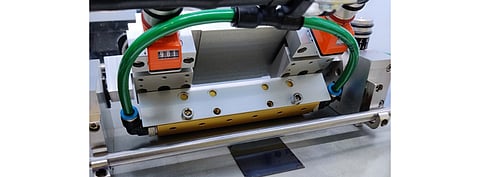

The team of the French National Solar Energy Institute (INES) at the country's Alternative Energies and Atomic Energy Commission (CEA) have announced achieving 18% power conversion efficiency (PSC) of perovskite solar modules.
They were able to achieve this level on an active surface area of 10 cm² under illumination of 1 STC sun, using a coating step carried out in air followed by a gas quenching conversion step to form the desired perovskite material. This material was developed without methyl ammonium comprising multi-cations and a mix of halogens or CsxFA1-xPb (I1-yBry) 3.
Formed at low temperature <100ºC, the layer was then integrated in modules using laser ablation as a structuring process. This greatly minimizes inactive area with a fill factor of > 93% leading to the 18% efficiency level achieved.
They state that the technique is compatible with integration on heterojunction silicon solar cells for tandem architecture developed within the CEA-INES.
While this efficiency level on a small surface area is still far from commercial application, the CEA-INES team said, on a philosophical note, that the 'scientific community must meet several challenges to demonstrate PSCs of large sizes compatible with industry, in order to ensure a bright future for their industrialization'.
In March 2020, CEA Liten claimed 20.3% efficiency for perovskite solar module using 8 cells on 11.2 cm² with a geometrical fill factor of >93% (see Liten CEA: 20.3% Perovskite Mini-Module Efficiency).
At a recent TaiyangNews Advanced Solar Module Technology conference, CEA-INES head of Solar, Dr. Anis Jouini gave the keynote on Tips & Tricks: How To Advance Modules; the recoding can be accessed for free here.
Speaking of modules, TaiyangNews is to launch its Bifacial Solar 2021 Report during our virtual conference on Bifacial Solar on March 4, 2021. Registration is free here.
